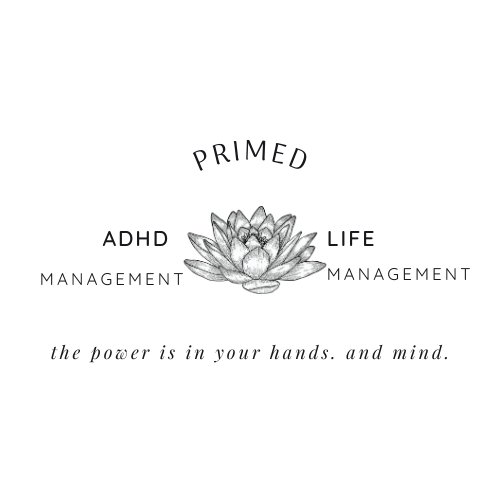Help! My mind wanders when I meditate

Does your mind wander when you meditate? Do you have trouble calming the mental noise? Do you get frustrated because you’re not “doing it right”, because, in that moment, thoughts aren’t “like clouds” as meditation teachers will guide (fuck them, scoffs your ego), and because you can’t think of “nothing”?
Your “to do” list creeps in, does it?
Your mind feels like a game of Whack-a-Mole with thoughts popping up and you furiously smashing them down with a mental mallet?
You’re not alone.
Whether you’re a meditating novice or you’ve been doing it for years, you might find meditating a challenge. Maybe you think you’re doing it wrong if you’re experiencing a wandering mind.
The meditation wandering mind has also been called “the monkey mind”.
One of the biggest challenges? Thoughts that pop up.
I published a piece about this five years ago. The day before I wrote it, I gave someone advice about meditation and the monkey mind. When I came across a relevant article the next day, I knew it was an indication that I should write about it.
This post is an amalgamation of that post and new thoughts. Often my beliefs change over time, and I keep an open mind, but I’m steadfast in this one.
On a group Zoom call for personal development recently, someone asked a question about how to handle distracting noise during meditation. I repeated my beliefs to her relief — and then I wrote about it a second time. My answer to her is below.

Meditation and the empty mind
People have the idea that you need to empty your mind during meditation and have no thought.
I don’t believe that.
You can pause your thoughts but can you really stop the next one or the one after that?
The article that I referred to in 2015 was Handling Intrusive Thoughts while Meditating from Psych Central. I addressed two parts:
“During mindfulness meditation, you keep your attention on your breath, but you want to be fully aware in this moment. So you still take note of sounds and smells, aches and pains, all that makes up the present moment. When thoughts arise the instructions are to notice them, let them go, and return to the breath.
But to just blot out thoughts without paying attention to them would not be very mindful at all. Don’t ignore your thoughts… Instead, work with them.”
I agree with the second paragraph. Work with your thoughts. However, I don’t think you need to let them go all the time.
“As a thought pops up, acknowledge it, let it go, and return to the breath. Don’t carry it out to a conclusion. Don’t dwell on it. Don’t try to add reason at this time. Notice that you’re thinking, that your mind has pulled you away from your awareness of this moment, and place your attention back on the breath.
The point is never to not think. The point is to remain aware of what is going on in and around you right now. Too many scattered thoughts can drag you away from the moment and cheat you of your present experience. Acknowledging thoughts, labeling them, and coming back to the present, to the breath, can help you stay centered and focused.”
…And sometimes you should carry it to a conclusion.
I acknowledge that there are different types of meditation and that mindfulness meditation is one style of many. I think it’s the style that people associate with meditation-
Sit cross-legged, silence your mind, and find your inner bliss.
To make you smile, I want to say, “Fuck that.”
But really, if that style of meditation works for you, that’s fantastic. Keep doing it. And stop reading this now.
(Again, I’m kidding with that last sentence.)

Does this thought serve me right now?
During a meditation once, my inner guide told me this:
When a thought enters your head, rather than banish it immediately, ask yourself, “Does this thought serve me in this moment?”
<p”>Don’t be afraid to follow it if the answer is “yes.” Don’t think that you’re “meditating wrong” if your mind wanders.
Here’s is the advice I gave this week
I don’t subscribe to the “empty mind” idea in meditation. Instead, I prefer to ask myself if that particular thought serves me. If not, I let it go. If it does, I follow it. I get inspired that way. Sometimes, the distracting thoughts are our ego trying to torpedo our efforts. Sometimes, they’re our inner guidance.
Sometimes you should go down that path
Sometimes you should go down that path. It could be insightful or inspiring or creative. If it’s something such as “Damn, I forgot to do the laundry” or “I need to buy eggs”, tell yourself that you’ll deal with it later and get back to meditating.
Ask yourself if that thought is disrupting your meditation time or whether it’s an integral part of it.
Ask yourself questions as you go down the path. What you might think is a wandering mind could be a conversation with your inner self.
My inner guide continues to tell me so. Sometimes those conversations with our inner selves, god (if you’re a believer), or our imaginary friends lead to solutions or something epically creative. When I was a child, I had a Jamaican caregiver who didn’t just talk to herself, she shouted. When I asked her about it she explained, “I’m reasoning with myself.” As a child, the shouting scared me. As an adult, I understand that she wasn’t losing her mind (or maybe she was), she was working things out. Whether she was talking to herself, to a god or an imaginary friend was between her and “them”.
Welcome the helper thoughts
Welcoming thoughts without fighting them could give you a more enriching meditation experience, a less stressful one, one that you don’t feel that you’re doing “wrong”.
My biggest challenge when I meditate is remembering the messages that come up. I sometimes want to take notes while I meditate, but I don’t want to interrupt the session. Sometimes by the time I become aware and alert again I’ve forgotten. I was searching, “Taking notes while meditating” when I found the article above.
Some years after publishing my first round of thoughts, I read Pema Chödrön’s book Start Where You Are: A Guide to Compassionate Living. In it, Chödrön frames her teachings on compassion around fifty-nine traditional Tibetan Buddhist proverbs. One of the slogans is “Self-liberate even the antidote.”
“Self-liberate even the antidote” is an encouragement to “touch and let go of whatever you come up with”. She says, “Whatever bright solutions or big plans you come up with, just let them go.” Even if it’s a positive or productive thought, “if the memory was a strong one, you’ll probably find that something is left behind when the words go.” That gets you closer to bodhicitta — an enlightened mind.
That isn’t my experience. What she discusses is “mindfulness” meditation. Again, if it works for you, great, but if it doesn’t, don’t fear that you’re doing it wrong. Don’t feel you need to keep trying until you get it “right”.
It’s dogma like this that makes people think that meditation isn’t for them, and then they abandon it completely. Dogma isn’t positive or negative.
Chodron believes in labelling thoughts rather than indulging them. I believe in labelling the disruptive thoughts and putting the productive ones on a mental whiteboard — or “parking lot” as meeting facilitators would call it.
I still sometimes forget those nuggets of wisdom that pop up when I’m in that zone and I tell myself to have faith that they’ll return if they’re significant. Occasionally, I will open my eyes to write it down.
I don’t think that there’s a “wrong way” to meditate. I believe that it’s important to find a style that suits you, that’s accessible to you. If your form of meditation is zoning out while doing the dishes, then do the dishes. If you get zenned out while running, hit the pavement.
If your idea meditation involves touching and letting go mindfully, that’s what you should do. As the book title says, “Start where you are.”
There are lots of ways to meditate. Find what works for you.
